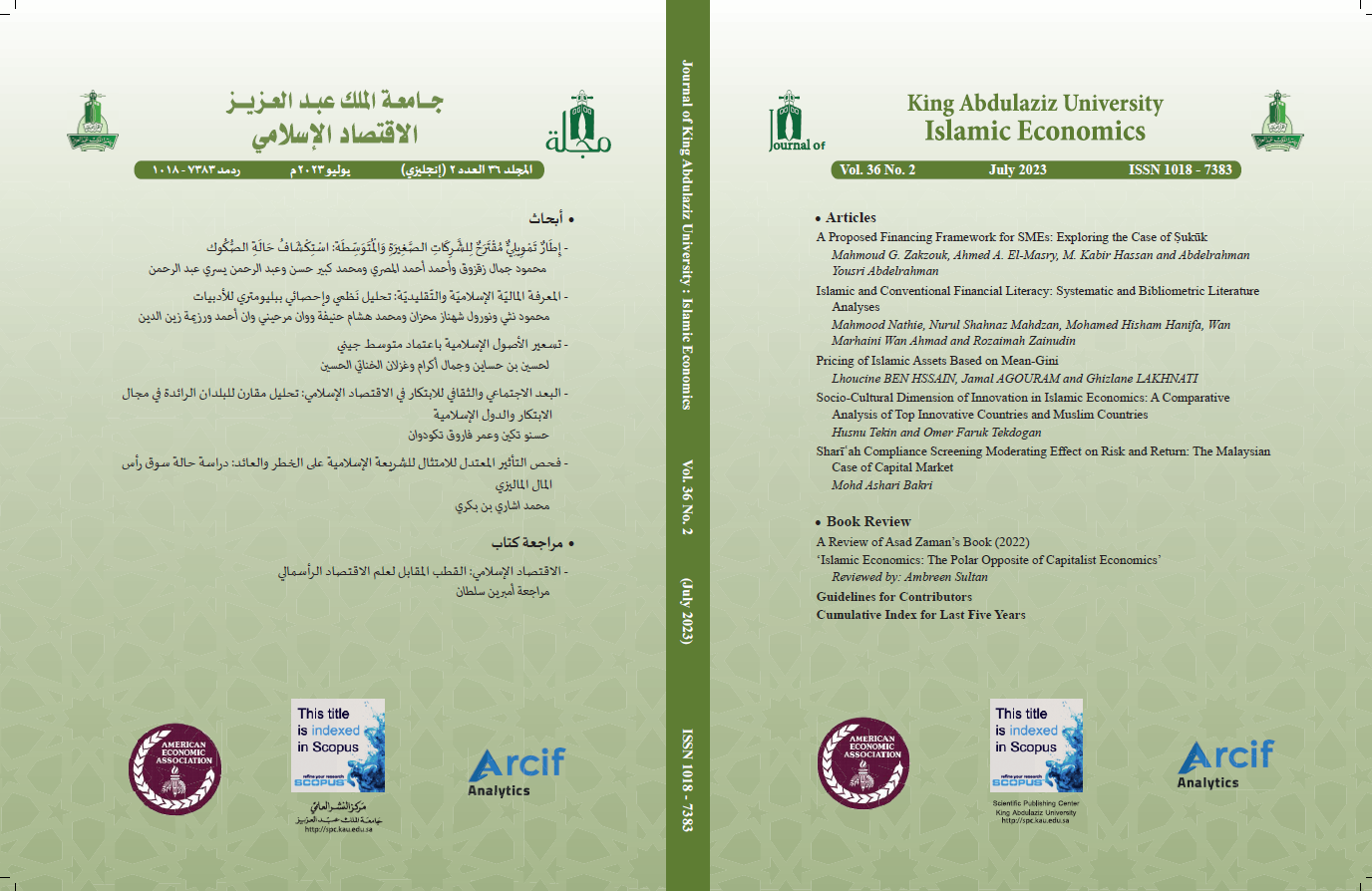Socio-Cultural Dimension of Innovation in Islamic Economics: A Comparative Analysis of Top Innovative Countries and Muslim Countries
محتوى المقالة الرئيسي
الملخص
In this study, we employ sub-Hofstede indexes and Global Innovation Index (GII) to demonstrate the socio-cultural dimension of innovation in Muslim countries by comparing it with top GII countries. Even though our comparative analysis points out that culture more or less matters in terms of innovation performance of countries, it seems that sub-Hofstede indexes are not sufficient alone to reveal the innovation performance of economies. On the other hand, even though Islam encourages innovative activities for Muslims, most of the Muslim countries have relatively lower R&D expenditures per capita compared to the top GII countries. Muslim countries with several exceptions such as Türkiye and Malaysia cluster around a certain index level in terms of sub-Hofstede indexes, which is not good for innovation capacity as well. Therefore, it may be possible to conclude that the institutional structures that will increase or reveal the innovation capacity of the society can be successful if they are compatible with the cultural roots, historical backgrounds, and geographic position of the societies since culture matters to promote innovation in countries. Therefore, Muslim countries should establish institutional structures compatible with their cultures to increase their innovation activities.

